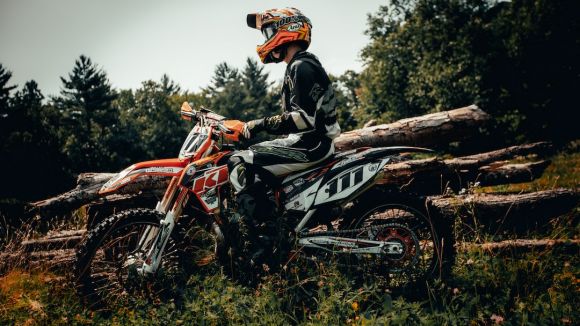Off-road riding is a thrilling and challenging activity that requires a unique set of skills and techniques. Whether you are a beginner or an experienced rider, mastering these techniques is essential for your safety and enjoyment. In this article, we will explore some key off-road riding techniques that will help you navigate through difficult terrains with confidence and control.
Maintaining Proper Body Position
One of the most important aspects of off-road riding is maintaining the correct body position. This involves standing up on the footpegs, with your knees bent and your weight centered over the bike. By standing up, you allow your legs to act as suspension, absorbing the impact of bumps and uneven surfaces.
When standing, keep your arms relaxed and elbows slightly bent. This will help you maintain better control over the bike and allow you to react quickly to any obstacles that may come your way. Remember to keep your head up and look ahead, focusing on where you want to go rather than on the obstacles in front of you.
Braking Techniques
Off-road riding often requires quick and precise braking. To brake effectively, you need to use both your front and rear brakes simultaneously. Applying too much front brake can cause the bike to nosedive, while relying solely on the rear brake can result in loss of control.
When braking, apply gradual pressure to both brakes, gradually increasing the pressure as needed. This will help you maintain stability and control over the bike, especially in slippery or loose terrain. Practice braking techniques in different conditions to develop a feel for the bike’s braking capabilities.
Cornering on Off-road Terrain
Cornering on off-road terrain can be challenging, as the surface may be unpredictable and slippery. To navigate corners safely and efficiently, it is important to master proper cornering techniques.
Approach the corner with controlled speed, and position your body towards the inside of the corner. This will help you maintain balance and allow the bike to lean into the turn. Look through the corner and focus on your exit point, rather than fixating on the obstacles in front of you. Remember to modulate the throttle smoothly to maintain traction and control throughout the turn.
Handling Obstacles
Off-road riding often involves encountering various obstacles, such as rocks, logs, or ruts. Learning how to handle these obstacles is crucial for maintaining control and preventing accidents.
When approaching an obstacle, stand up on the footpegs and shift your weight towards the rear of the bike. This will help you maintain stability and ensure that the front wheel doesn’t get caught on the obstacle. Use your legs as suspension and absorb the impact as you roll over the obstacle.
Maintaining Momentum
Off-road riding requires maintaining momentum to overcome challenging terrain. It is important to keep a steady throttle and avoid sudden changes in speed or direction. By maintaining momentum, you can avoid getting stuck in soft or muddy terrain and make it through difficult sections more easily.
Practice regularly in different terrains to improve your ability to maintain momentum and adapt to changing conditions. Gradually increase your speed and challenge yourself to navigate through more difficult obstacles.
Conclusion
Mastering off-road riding techniques is a continuous process that requires practice and dedication. By maintaining proper body position, mastering braking techniques, improving cornering skills, handling obstacles effectively, and maintaining momentum, you can become a confident and skilled off-road rider. Remember to always prioritize safety and wear appropriate protective gear. With time and experience, you will be able to tackle any off-road adventure with ease and enjoyment.
